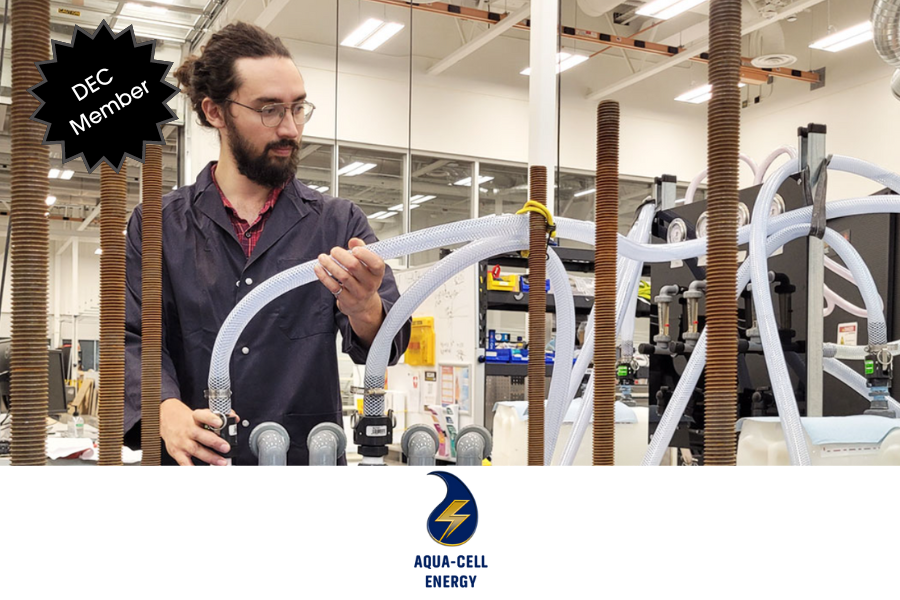NAIT partners with startup to develop industrial batteries that use saltwater
Source: | · TERRESTRIAL ENERGY · | September 10, 2024
Aqua-Cell offers a made-in-Alberta, clean-energy storage solution
You’d be forgiven for walking into Keith Cleland’s space at NAIT’s Centre for Grid Innovation (CGI) and having no idea what it is that he and his company, Aqua-Cell Energy, have built.
To the untrained eye, the device is an indecipherable collection of hoses, valves, gauges, small plastic tanks and, anchoring it all, what resembles an undersized gurney surfaced with a thick blue metal plate. A “high-voltage” sticker on it adds a sense of danger to mystery.
But that sticker also hints at the machine’s purpose. While it bears no resemblance to, say, the ubiquitous alkaline cell that powers a flashlight, or the increasingly recognizable, boxy lithium ion cells that set EVs in motion, Cleland's device is a battery. And it’s one of a kind, built onsite in partnership with staff from NAIT’s Applied Research group.
It may, however, prove to be as transformative as its more common counterparts. Since arriving at CGI around the middle of 2023, Aqua-Cell has been driven by primarily one goal: to harness the power of renewable energy. But just as its battery runs counter to expectations, the company intends to do that harnessing in a uniquely sustainable way.
Hence the hoses and tanks. Aqua-Cell’s battery – big enough to provide power at an industrial scale – runs on inexpensive, safe and readily available saltwater. That leads naturally into Aqua-Cell’s other, loftier goal.
“We would like to be a key part of the clean-energy transition,” says Cleland.
Filling the gap in the market (cheaply)
A background of seemingly disparate experiences led Cleland to the idea underlying Aqua-Cell.
Originally from Calgary, he’s a chemical engineer by training, with a master’s degree from the University of Waterloo. In the energy industry, he’s worked with what are known as flow batteries, in which electricity is stored through interactions between chemicals dissolved in liquid. In the water industry, he’s used electricity to treat saltwater.

